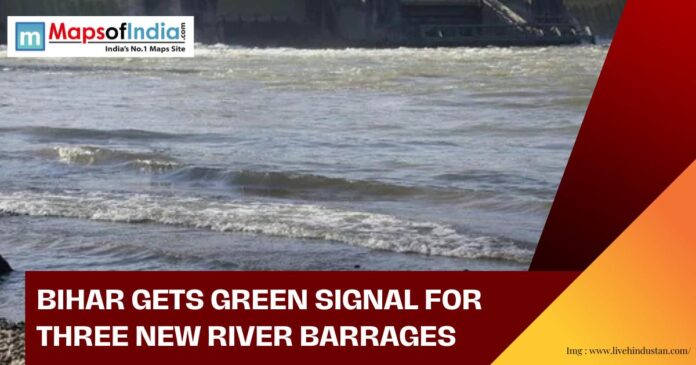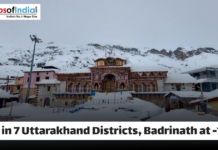The green light has now been given by the Union and Bihar governments to construct three new barrages on the Bagmati, Mahananda, and Kamala rivers, which has been a big stride in regulating floods and enhancing irrigation in the Bihar flood-prone districts. The move is projected to be a big relief to the farmers, residents and local communities that have, over time, endured frequent floods, waterlogging, and agricultural damage caused by uncontrolled river discharges during the monsoon season.
The suggested barrages will be properly positioned to control the water flow movements in these rivers, which have in the past caused havoc in various parts of the country, such as Sitamarhi, Madhubani and Kishanganj, among others. Two barrages will be established on the Bagmati River, one will be close to Dheng and one will be close to Katounja, and the third will be located on the Mahananda River. These projects are to be included in the larger project of Bihar to develop its flood control systems and to improve the water management system of the state.
Officials have pointed out that the new barrages will not only enable alleviating floods but also enhance irrigation systems to farmlands to have a more dependable supply of water to crops throughout the year. This will increase agricultural output, sustain local economies and stabilize livelihoods in areas with floods. The barrages will also help in the improved management of river water to be used in homes and industries as opposed to relying on rain, which is unreliable.
The Bihar government has suggested that the projects would be financed by both the state and central governments. Detailed Project Reports (DPRs) have already been made and handed in to be approved, and work is likely to commence according to very tight timelines so as to make sure that everything is completed in time. The government has stressed that environmental approvals and social impact studies will be carried out to create minimal disturbance to the environment and to address the fears of the local people who might be affected by the acquisition of land or even the change in the course of rivers.
Experts observe that the effectiveness of these barrages will be determined by the presence of proper planning, maintenance and integration with the already existing flood management systems. Silt management, frequent inspection, and an effective water release system will be important in ensuring that their effect is maximized. There will also be community involvement and open implementation to make sure the benefits are available to the targeted population, especially farmers and residents living in the flood-prone regions.
This grand project is an indication of the desire by the state and central governments to modernize water infrastructure, curb community losses associated with floods, and encourage sustainable farming. The creation of these three barrages will allow Bihar to make a big leap towards the proper management of water, mitigation of disasters and environmental and economic stability in the long run for its people.










